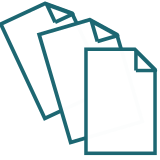These are the notes for the presentation using HTML Slidy. If viewing the slides you can press "A" to display these notes (and press "A" again to hide them). To advance to the next slide, press "page down", or click the left mouse button.
"Cloud computing" is a new version of a decades old idea in information technology: share a large and expensive computer system (the server), over a computer network (the Internet "cloud") amongst many people using computers (including tablet computers and smart phones). The servers can run records management software and store records, making this a cloud computing application.
The "Privacy and Cloud Computing for Australian Government Agencies Better Practice Guide" (AGIMO, February 2012) cautions that off-shore cloud computing services may be in jurisdictions without privacy and information protection required by Australian law and foreign governments may access the data secretly. These privacy laws do not apply just to government agencies and this may also apply to financial institutions, telecommunications companies, hospitals and universities.
Another issue is the sustainability of cloud computing. By moving the server from the corporation to somewhere else, the environmental impact of the system may be hidden.
Some examples of cloud computing applications are the office productivity suites Google Apps for Business and Microsoft Office 365 and the online accounting package Saasu.
One issue with such products is the ability to migrate the data to and from the cloud server. Even where the same company, such as Microsoft, offers locally hosted and cloud versions of there applications, how easy is it to migrate data from one to the other? How easy is it to migrate from one service to another? If your cloud provider ceases to provide their service, how will this effect your organisation's operations?
The Institute of IT Professionals NZ released a Cloud Computing Code of Practice in June 2012, which may help with migration and other issue. It covers:
- Disclosure
- Corporate Identity
- Ownership of Data
- Security
- Data Location
- Data Access and Use
- Back up and maintenance
- Geographic Diversity
- SLA and Support
- Data Breach Notification
- Data Transportability
- Business Continuity
- Data Formats
- Ownership of Application
From: Cloud Computing Code of Practice, Institute of IT Professionals NZ, June 2012
A cloud server can be used to provide access to records only to a very limited range of internal users in an organisation. However, the Internet is also used at the other extreme to provide "Open access", where documents are available freely to anyone. But event such open access has limitations, with the provider reserving some rights. With a Creative Commons licence, a government agency or academic will typically require that their work be at least acknowledged and they may limit what changes can be made.
The Australian Government issued a Declaration of Open Government, In July 2010. Changes were then made to FOI legislation.
The popularity of web search engines need not cause records managers to rethink their processes. At their core records management systems still have a basic set of metadata about the record. Typically a superset of the Dublin Core metadata standard will be used.
Metadata needs to be supplemented by full text indexing and searching of documents. Non-specialist staff cannot be expected to understand the intricacies of metadata, and will be unlikely to understand more than simple free text search and the use of "tags" (simple keywords).
Most documents created today are in electronic format and never converted to paper. So web friendly formats should be used. The PDF format was designed for compatibility with paper and so is a second best solution for pure e-documents.
The native format of the web is HTML. Variations of HTML are available, particularly for eBooks. The same document can be rendered to different formats for different devices, but a simple web format will be most useful
As an example, the notes for my course "ICT Sustainability: Assessment and Strategies for a Low Carbon Future" are available in multiple formats. The course content was created using an on-line Learning Management System ("Moodle") in one version of HTML format and then converted to Amazon Kindle and Apple and ePub eBook formats, as well as PDF, a standalone web site and a print-on-demand paperback book. However, the original simple HTML version is most popular with students and simpler to maintain.
Having records in the cloud allows for innovative new uses of the information. In the case of the application of online techniques to government (so called Gov 2.0), data from different sources can be combined in new ways. To get Canberra public servants thinking about how to do this, a series of relatively informal GovCamps and GovHacks are held, where this is discussed and example "mash ups" created.
In a rush to "cloud computing" the basics of good records management must not be forgotten. The National Archives of Austincralia provide a simple " Records management and the cloud—a checklist" (2011).
Version 1.0, 11 September 2012, Tom Worthington

Records in the Cloud? by Tom Worthington is licensed under a Creative Commons
Attribution-ShareAlike 3.0 Unported License.






